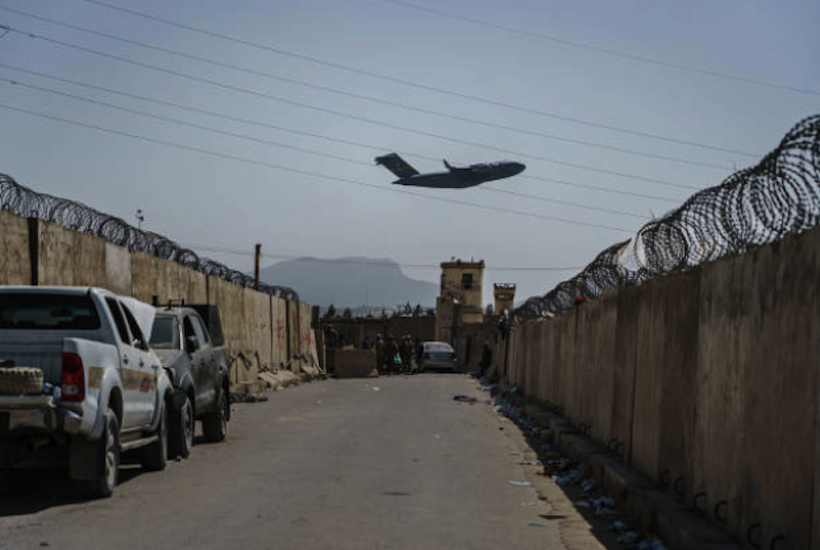It is a strange and curious fact that moments of seismic historical significance are so often capable of being reduced to a single galvanic frame. Iconic photos and poignant images habitually hijack and drive our public discourse, sometimes becoming emblematic of broader undercurrents and society’s mood at large.
While it may sometimes be hard to pick ‘the’ defining moments of our time, others offer themselves up far more readily. Such was the case last month when heart-wrenching images of a United States C-17 Globemaster’s barrelling down the runway of Hamid Karzai International Airport, with Afghans clinging to its exterior, were beamed into homes around the globe. The visions of desperate civilians falling to their deaths from the plane’s fuselage marked the sad and sudden end of the 20-year Afghan conflict and, arguably, the end of interventionism and nation-building as core tenets of US foreign policy more broadly.
Even now, with the withdrawal complete, the Biden Administration’s precise reasons for leaving Afghanistan remains opaque. If the President’s rhetoric regarding the necessity of ending America’s ‘forever war’ is to be believed, it is unknown why the decision to abandon Afghanistan did not trigger a broader wholesale re-evaluation of America’s longstanding commitments in conflict zones around the world. As one national security adviser noted, it is unclear how the Biden Administration came to see a continued presence in Afghanistan as unjustifiable and too long and costly when 28,500 US servicemen remain in South Korea to this day, guaranteeing that country’s security some 70 years after the end of the Korean War. More recently in Iraq, Operation Inherent Resolve has demonstrated the critical difference that the long-term deployment of limited air and intelligence assets can make in supporting local force elements. Washington is yet to provide a comprehensive explanation as to why Afghanistan in particular was abandoned.
In hindsight, Biden’s claim that leaving Afghanistan was necessary to prevent more American casualties also rings hollow. With the deaths of 13 US service personnel in the suicide bombing at Kabul Airport, it is a fact that more American lives have now been lost as part of the President’s botched withdrawal than during the entire last two-year period of the Afghan conflict combined. Notwithstanding any lull in hostilities stemming from peace negotiations over recent years, the price paid by retreating US forces has been immense.
Similarly, it remains difficult to reconcile Secretary of State Antony Blinken’s belief that withdrawal was necessary in order to allow America to refocus on strategic competitors like China. We know that since the fall of Kabul, China has wasted no time in making overtures to the Taliban aimed at securing mineral deposits as well as Afghanistan’s participation in the New Silk Road project. It is fanciful to suggest that the power vacuum created by the shambolic US retreat from Afghanistan could somehow result in a favourable geopolitical outcome.
While commentators have rightly pointed out that it was the Trump White House that first courted the Taliban with the offer of peace negotiations (thereby laying the foundations for the US withdrawal), it is disingenuous to pretend that blame for the chaotic scenes coming out of Kabul can be laid at the feet of any one bygone US. president. Rather, it should be acknowledged that the catastrophic intelligence failures of recent months occurred on Biden’s watch. Blame can be placed squarely on the Biden Administration’s shoulders for the missteps which occurred in the crucial two weeks leading up to the Afghan government’s capitulation. Ultimately, it was the Biden Administration’s end-stage failings that resulted in a major humanitarian crisis and which allowed for billions in military hardware to fall into Taliban hands.
America’s reputation around the globe is greatly diminished today, but not necessarily because a decision was made to leave Afghanistan per se. The real damage to America’s brand was done during the hapless decision-making of recent weeks, with this leading directly to US troops spending their last days in Kabul pinned down by rocket fire at the airport.
For America’s global partners, and for South Korea, Taiwan and Australia in particular, the events of the past month have served as a major wake-up call. Biden’s candid decision to withdraw US troops from Afghanistan before guaranteeing the evacuation of all US citizens and visa holders has seriously eroded the confidence of Western allies. The core takeaway message is this: if America cannot guarantee the safety of its own citizens, it cannot be relied upon to guarantee the safety of its neighbours’ citizens during times of conflict.
The question now is whether Biden and Blinken can survive the Afghan debacle politically. In the short-term, the answer is of course ‘yes’. However, in the longer term, it is far less certain whether either will emerge unscathed. Despite the deep-seated unpopularity of the Afghan war, America stands as an exception to the general rule by which foreign policy is viewed as distinct and separate from a domestic leader’s electoral success. Americans do not easily forgive those who are perceived to have imperilled the lives of American citizens abroad in the interests of political expediency.
The West now knows only too well the costs associated with being in Afghanistan. It is soon to find out the costs, if any, of not being there. But whatever eventuates, the US undoubtedly leaves Afghanistan today a diminished force, far more unsure of itself and its place in the world than when it first arrived nearly 20 years ago.
Got something to add? Join the discussion and comment below.
Get 10 issues for just $10
Subscribe to The Spectator Australia today for the next 10 magazine issues, plus full online access, for just $10.

























Comments
Don't miss out
Join the conversation with other Spectator Australia readers. Subscribe to leave a comment.
SUBSCRIBEAlready a subscriber? Log in